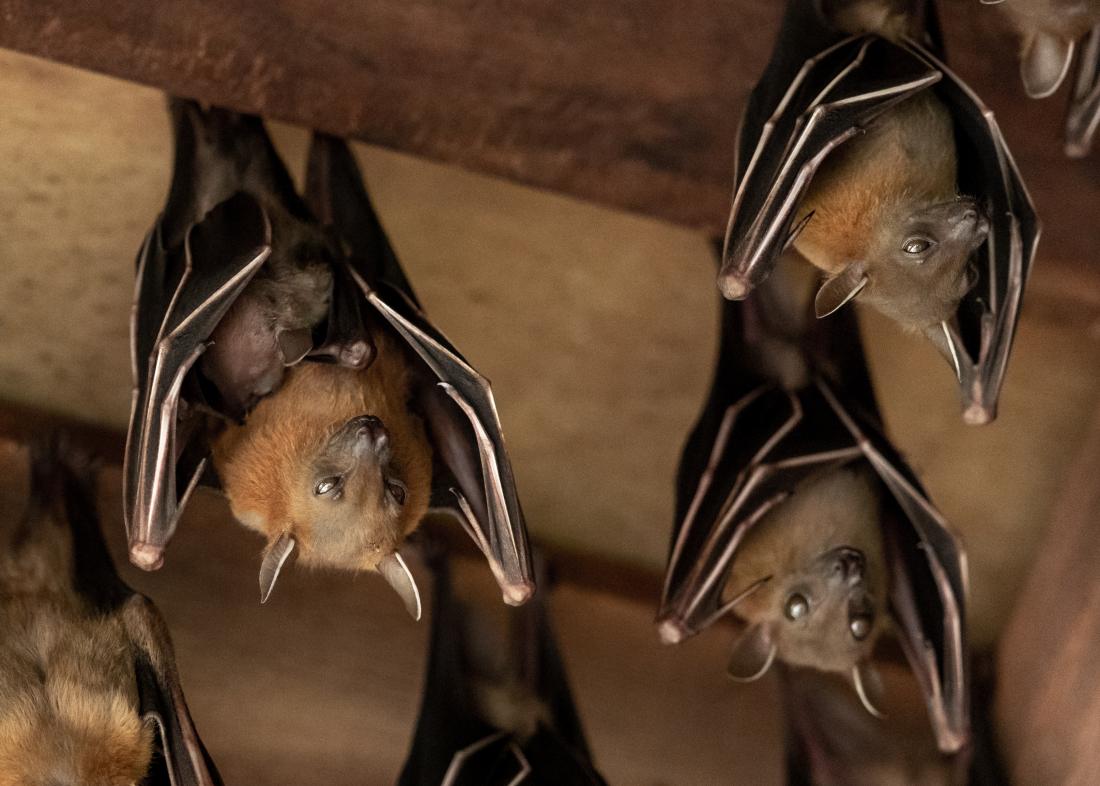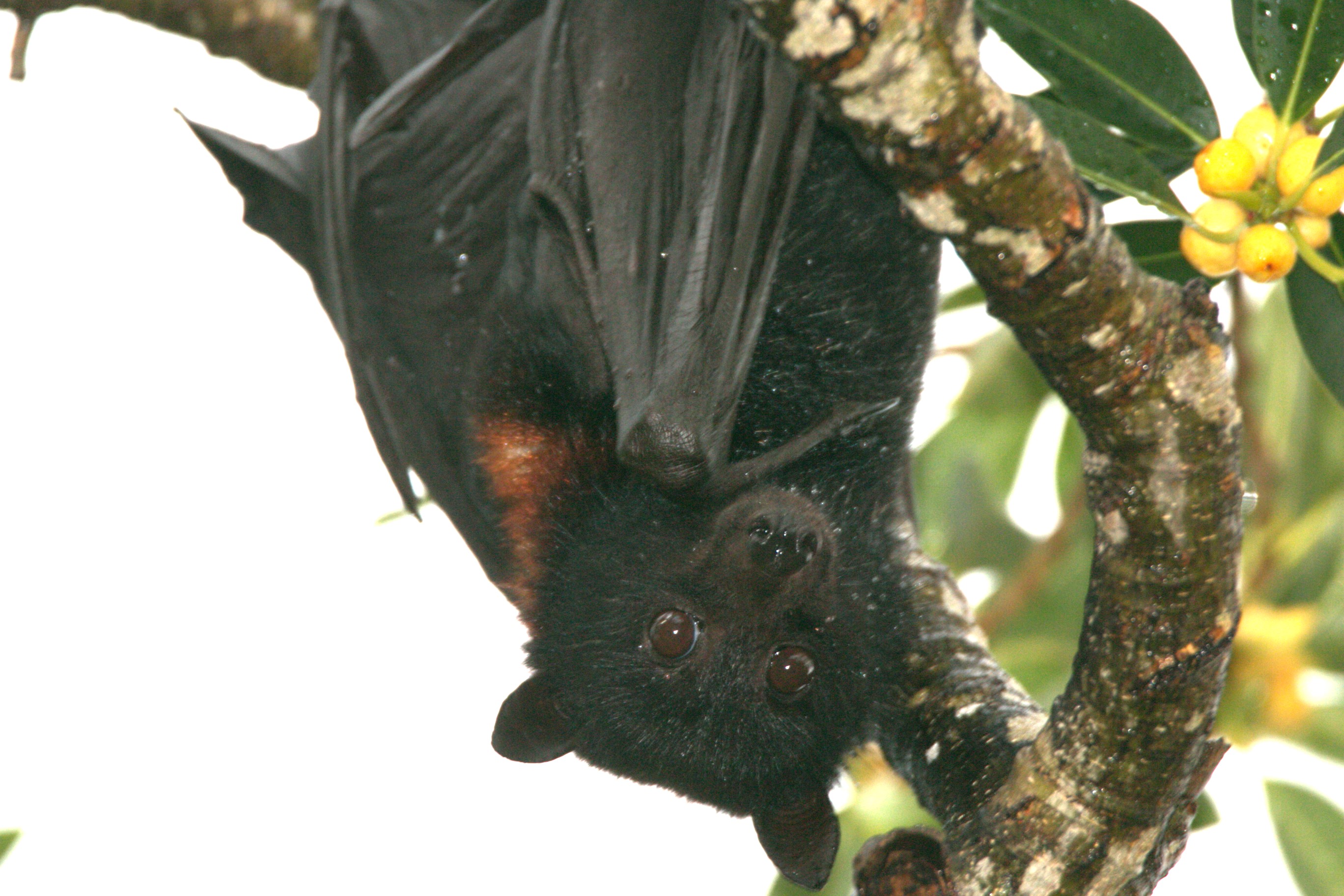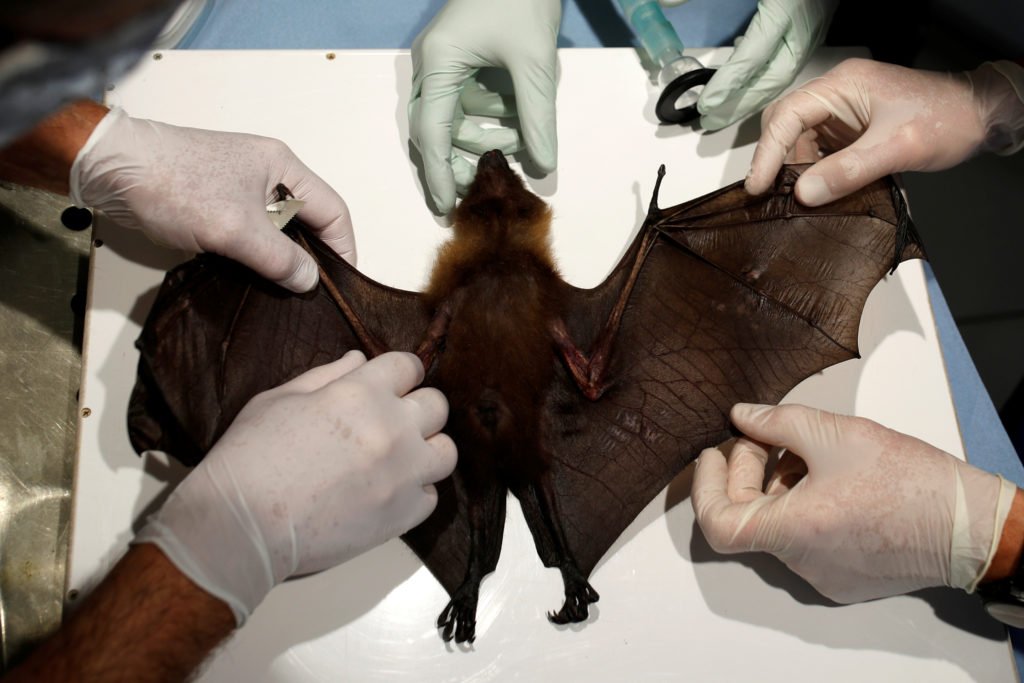Flying foxes often suffer from heat stress, dehydration, and viral infections. These health problems can severely impact their survival.
Flying foxes, a type of large bat, play a crucial role in pollination and seed dispersal. Despite their ecological importance, they face numerous health challenges. Heat stress is a significant issue, particularly during extreme weather. Dehydration often follows, exacerbated by habitat loss and lack of water sources.
Viral infections, such as the Hendra virus, pose serious threats to their populations. Conservation efforts must address these health concerns to ensure their survival. Understanding and mitigating these problems can help protect flying foxes and maintain ecological balance. By focusing on their health, we can support both the species and the ecosystems they sustain.

Credit: www.pbs.org
Common Diseases
Flying foxes, also known as fruit bats, face several health problems. Understanding common diseases is crucial for their conservation and well-being. Below are some of the most prevalent health issues.
Viral Infections
Flying foxes are susceptible to various viral infections that can severely affect their health.
- Hendra Virus: This virus can cause severe respiratory issues and neurological symptoms.
- Australian Bat Lyssavirus (ABLV): ABLV is similar to rabies and can be fatal.
- Nipah Virus: This virus can lead to encephalitis, causing brain inflammation and death.
Bacterial Diseases
Bacterial diseases also pose a significant threat to flying foxes.
- Leptospirosis: This bacterial infection can cause kidney damage, liver failure, and death.
- Salmonellosis: Contracted through contaminated food, it leads to severe gastrointestinal distress.
- Pasteurellosis: This infection results in respiratory issues and can be fatal if untreated.
| Disease | Cause | Symptoms |
|---|---|---|
| Hendra Virus | Virus | Respiratory issues, neurological symptoms |
| Australian Bat Lyssavirus | Virus | Rabies-like symptoms |
| Nipah Virus | Virus | Brain inflammation, death |
| Leptospirosis | Bacteria | Kidney damage, liver failure |
| Salmonellosis | Bacteria | Gastrointestinal distress |
| Pasteurellosis | Bacteria | Respiratory issues |
Nutritional Deficiencies
Flying foxes need a balanced diet for good health. Without proper nutrition, they face serious health problems. Nutritional deficiencies can lead to many issues. Let’s explore the causes and symptoms.
Causes Of Malnutrition
Flying foxes can suffer from malnutrition due to several reasons. The main causes include:
- Poor Diet: Not enough fruits or variety.
- Habitat Loss: Fewer food sources in the wild.
- Competition: Fighting for food with other animals.
- Human Impact: Pollution and pesticides on fruits.
Signs And Symptoms
It’s crucial to recognize the symptoms of malnutrition in flying foxes. Here are some common signs:
- Weight Loss: Noticeable drop in body weight.
- Weakness: Difficulty flying or moving.
- Skin Issues: Dry or flaky skin.
- Poor Fur Condition: Dull or thinning fur.
- Behavioral Changes: Lethargy or unusual aggression.
| Cause | Effect |
|---|---|
| Poor Diet | Weight Loss, Weakness |
| Habitat Loss | Behavioral Changes, Skin Issues |
| Competition | Poor Fur Condition, Weakness |
| Human Impact | Skin Issues, Behavioral Changes |
Understanding these causes and symptoms can help in caring for flying foxes. Ensuring a balanced diet is key to their health.
Environmental Stressors
Flying foxes are facing many health problems due to environmental stressors. These stressors include habitat loss and climate change. Understanding these factors can help us protect these important creatures.
Habitat Loss
Flying foxes need large trees for roosting and feeding. Habitat loss is a major threat to their survival. Urbanization and deforestation are reducing their natural habitats. This forces them to move closer to human settlements.
- Deforestation: Cutting down trees destroys their homes.
- Urbanization: Building cities takes away their natural spaces.
Without proper habitats, flying foxes struggle to find food and shelter. This leads to malnutrition and increased stress.
Climate Change Impact
Climate change affects the availability of food for flying foxes. Changes in temperature and rainfall patterns disrupt their feeding cycles. Extreme weather events also pose serious risks.
| Climate Change Factor | Impact on Flying Foxes |
|---|---|
| Temperature Rise | Heat stress and dehydration |
| Rainfall Changes | Reduced fruit availability |
| Extreme Weather | Injury or death from storms |
Flying foxes are sensitive to these changes. They may experience health issues like heat stress, dehydration, and starvation. Protecting their habitats and addressing climate change are crucial steps.

Credit: www.medicalnewstoday.com
Human Interference
Human activities greatly affect Flying Foxes. These activities harm their health and habitat. Human interference includes poaching, hunting, and pollution. These issues lead to many health problems for Flying Foxes.
Poaching And Hunting
Poaching and hunting have reduced Flying Fox populations. People hunt them for their meat and fur. This leads to stress and injuries. Injured Flying Foxes can’t find food or escape predators. This increases their risk of infection and death.
Pollution Effects
Pollution affects Flying Foxes in many ways. Chemicals in the air and water harm their health. Polluted water sources lead to diseases and death. Air pollution affects their respiratory system.
Here is a table showing common pollutants and their effects:
| Pollutant | Effect on Flying Foxes |
|---|---|
| Industrial Waste | Causes diseases and weakens immune systems |
| Pesticides | Leads to poisoning and death |
| Plastic Waste | Causes choking and digestive blockages |
Protecting Flying Foxes requires reducing human interference.
Preventive Measures
Flying foxes, also known as fruit bats, face many health problems. Implementing preventive measures is crucial to ensure their well-being. This section covers essential strategies to protect these important creatures.
Vaccination Programs
Vaccination programs play a vital role in protecting flying foxes. Regular vaccinations can prevent deadly diseases.
Key vaccines include:
- Rabies Vaccine: Protects against rabies, a fatal disease.
- Hendra Virus Vaccine: Shields against the Hendra virus.
Implementing these vaccination programs can save countless lives. Ensure all flying foxes receive these essential vaccines.
Habitat Conservation
Conserving habitats is essential for the survival of flying foxes. Healthy habitats support their daily needs.
Key habitat conservation steps include:
- Protecting Forests: Prevent deforestation to maintain their homes.
- Restoring Habitats: Replant trees and restore damaged areas.
- Creating Safe Zones: Establish protected areas for flying foxes.
These steps help sustain flying fox populations. Healthy habitats lead to healthy flying foxes.
By focusing on vaccination programs and habitat conservation, we can prevent many health problems. Protecting these creatures ensures a balanced ecosystem.

Credit: www.qld.gov.au
Rehabilitation Efforts
Flying foxes often face health problems due to habitat loss, food scarcity, and human interference. Rehabilitation efforts are crucial for their survival. These efforts include rescue centers and release strategies.
Rescue Centers
Rescue centers play a vital role in flying fox rehabilitation. They provide a safe haven for injured and sick animals. Veterinarians and volunteers work tirelessly to nurse these animals back to health.
| Service | Description |
|---|---|
| Medical Treatment | Provide essential medical care and treatment for injuries. |
| Feeding | Supply nutritional food to malnourished flying foxes. |
| Sanctuary | Offer a safe environment for recovery and rehabilitation. |
Release Strategies
Once flying foxes recover, release strategies are implemented. These strategies ensure the flying foxes can survive in the wild. Soft release and hard release are the two common methods used.
- Soft Release: This involves a gradual reintroduction to the wild.
- Hard Release: This involves immediate release into the natural habitat.
Both methods have their benefits and challenges. The choice depends on the condition of the flying fox and the environment. Monitoring is crucial after release to ensure the flying fox adapts well.
Future Research
Understanding flying fox health problems requires ongoing research. Scientists are exploring new ways to treat and prevent diseases affecting these vital creatures. Future research aims to develop innovative treatments and encourage collaborative studies.
Innovative Treatments
Researchers are working on new and advanced treatments for flying foxes. These treatments include:
- Gene therapy to fix genetic issues.
- Vaccines to prevent common diseases.
- Nutritional supplements to boost immunity.
Gene therapy can help flying foxes by fixing faulty genes. This approach may prevent inherited diseases and improve their overall health. Vaccines are being developed to protect against viruses and bacteria. These vaccines can save lives and reduce the spread of infections.
Nutritional supplements can help flying foxes stay healthy. These supplements provide essential vitamins and minerals. A balanced diet supports their immune system and helps them fight off illnesses.
Collaborative Studies
Scientists from various fields are joining forces. Collaborative studies are essential for understanding flying fox health problems. These studies involve experts in:
- Veterinary medicine
- Ecology
- Genetics
Veterinary medicine experts provide insights into disease treatment and prevention. They help develop new therapies and improve existing ones. Ecologists study the environment and its impact on flying fox health. They identify factors that contribute to disease outbreaks.
Genetics researchers explore the genetic makeup of flying foxes. They identify genes linked to diseases and develop targeted treatments. Collaborative studies bring together these experts to share knowledge and find solutions.
The table below summarizes the key areas of future research:
| Research Area | Focus |
|---|---|
| Gene Therapy | Fixing genetic issues |
| Vaccines | Preventing diseases |
| Nutritional Supplements | Boosting immunity |
| Veterinary Medicine | Disease treatment and prevention |
| Ecology | Environmental impact |
| Genetics | Identifying disease-related genes |
Frequently Asked Questions
What Is The Risk Of Flying Fox?
Flying foxes may carry diseases like Hendra virus and Australian bat lyssavirus. They can also cause crop damage.
What Is The Lifespan Of A Flying Fox?
Flying foxes live up to 15-20 years in the wild. In captivity, their lifespan can extend to 30 years.
What Is Killing The Flying-foxes?
Flying-foxes are dying due to habitat loss, extreme heat, and diseases. Human activities and climate change also contribute to their decline.
Do Fox Bats Carry Diseases?
Yes, fox bats can carry diseases. They can transmit viruses like Hendra and Australian bat lyssavirus to humans and animals.
Conclusion
Understanding flying fox health problems is crucial for their conservation. Awareness helps in early detection and treatment. Protecting their habitats also plays a vital role. Let’s work together to ensure these magnificent creatures thrive. Your support and knowledge can make a significant difference in their survival.
